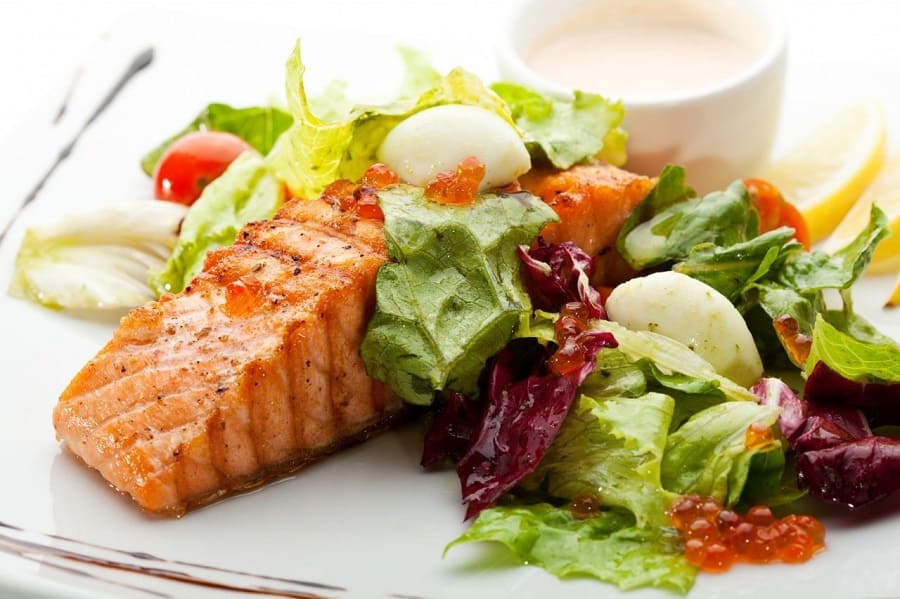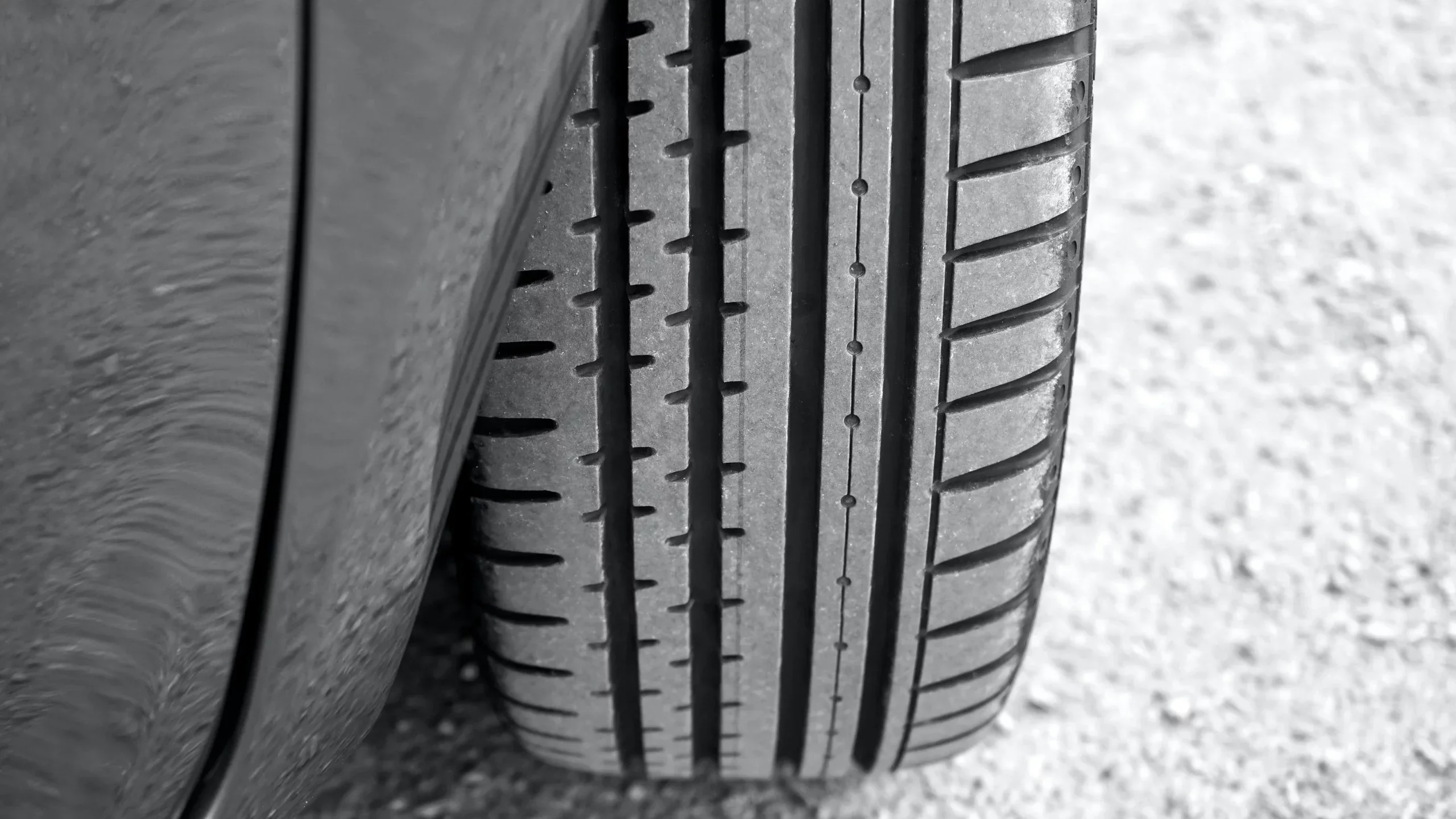

How to Eat Healthy as a Truck Driver?
The truck driver population is one of the unhealthiest in the United States. This is not entirely surprising, given how hard it can be for a truck driver to stay on top of good eating habits and maintain a healthy lifestyle when a driver is on the road day in, and day out. Thankfully, with a little planning and a little more discipline, a truck driver can maintain healthy eating habits with relative ease.
-
How Hard Is It to Stay Healthy While Driving a Truck?
- The Difficulty of Healthy Eating for Truck Drivers
-
Make a Healthy Eating Plan for Truck Drivers
- Some Healthy Foods for Truck Drivers
- Things to Avoid/Reduce in Your Diet
- Healthy Eating Tips for Truck Drivers
- Lunch for truck drivers
- Dinner Menu for Truck drivers
- Truck drivers’ desserts
- Make Time for Healthy Habits

How Hard Is It to Stay Healthy While Driving a Truck?
According to Corporate Wellness Magazine, there are over 7 million truck drivers on the road — and more than half are obese (the national rate is 26.7 percent). Truckers are 50 percent more likely to develop diabetes than the rest of the working population. 87 percent of truck drivers suffer from hypertension or pre-hypertension. Moreover, less than a third of truck drivers report having a primary care physician.
It can seem hard for a truck driver to take proper care of themselves while driving trucks, and it can be easy to develop bad eating habits. In general, 49 percent of working adults regularly exercise and 21 percent smoke nicotine. Compare this to the 8 percent of truckers who exercise on a regular basis and 54 percent who smoke. As a truck driver, you may have to work a little harder to maintain healthy eating habits, but it is definitely worth it.
The Difficulty of Healthy Eating for Truck Drivers
There’s no question that a truck driver’s life can involve long days and lots of stress. Food options on the road are also limited, with high-sodium and fast food being more prevalent than choices with fresh produce. Healthy eating for truck drivers is even more challenging when you take a good look at what truck stops offer.
The National Institute for Occupational Safety and Health branch of the CDC evaluated 16 truck stops across the country. The criteria included what kind of restaurants were around and whether there were truck-accessible grocery and eating facilities in the vicinity. Apparently, most truck stops had full-service or fast food restaurants, but there were very few healthy food options. Sure, there were some healthy menu items, but one in four truck stops didn’t have both a healthy meat and vegetarian option. About one in five convenience stores offered no healthy food options, period.
Make a Healthy Eating Plan for Truck Drivers
A healthy eating plan for truck drivers isn’t just about what water and foods they are eating but also how and when they are eating them. Seeing all these new “rules” might seem daunting, but don’t be discouraged. You can try to adopt a few of these guidelines at intervals. This way, as you get used to one batch of suggestions, you can accumulate more — and eventually, every truck driver will be adopting a much healthier diet, water control and eating routine.
Some Healthy Foods for Truck Drivers
- Protein — such as eggs, meats, yogurt, nuts, and beans. Eating protein helps to stabilize your blood sugar, which is even more important if you suffer from diabetes. They also improve the reserves of carbohydrate energy and help you feel “full” after your meal. Suggestions: eating poached or boiled eggs, grilled chicken or steak, chickpeas and bean salads, nut/trail mixes (not candied), peanut or other nut butter on your toast.
- Fiber — such as fruits and vegetables, whole grains (oatmeal, flaxseeds, and bran). There are two kinds of fiber — soluble and insoluble. Soluble fiber is found in whole grains and legumes/beans predominantly. In adequate amounts, eating it lowers cholesterol. Insoluble fiber supports a healthy digestion system, providing roughage and helping with or preventing constipation as well as fueling the good bacteria in the colon. As a bonus, eating fiber makes you feel fuller, so you are less likely to overindulge in terms of serving sizes, numbers, and snacking. Suggestions: eating oatmeal with dried fruit, granola on your yogurt, bran cereal, quinoa salad, celery sticks.
- Fruits and Vegetables — Apart from fiber, eating fruits and vegetables also provides your body with essential vitamins and minerals, which are good for supporting your immune system and lowering blood pressure. They also provide antioxidants and phytochemicals, which are said to prevent heart disease and cancer and are a good source of fluids. Suggestions: eating berries in your cereal, veggies and dip, smoothies, fresh and/or dried fruit for snacking.
- “Good” Fats — Omega 3 fats found largely in fish can help reduce inflammation, triglyceride levels, arthritis, blood pressure, and the risk of Alzheimer’s and other conditions related to aging. They are also helpful in reducing depression. Olive, canola, and avocado oils are also healthier fats. The fats to avoid eating — or eating less frequently when you can: corn, safflower, sunflower, and soybean oils.
- Water — It is important to stay hydrated, because it contributes to a healthy cardiovascular system, keeps muscles and joints working smoothly, and helps you focus and feel mentally sharp. Control your water consumption during your work.
Things to Avoid/Reduce in Your Diet
A list of healthy foods for truck drivers is great, but you need to make sure you don’t counteract the nutrition you get by eating copious quantities of unhealthy foods. Every truck driver should have a treat once in a while, but in general, try to limit your consumption of:
- Deep-fried foods.
- Drinks with high sugar levels, such as soda and concentrated fruit juices.
- Highly processed foods, such as white bread, cakes/cookies and other sugary baked foods, chips, bacon and sausages, candies, hot dogs, and chicken nuggets.
- Fast food.
- “Instant” anything, such as instant rice and packaged ramen.
- High-sodium/high-fat foods, such as bacon, pizza, and flavored nuts.
Healthy Eating Tips for Truck Drivers
When a truck driver concentrates on delivering the load and spending 14 hours on the road at a time, healthy eating isn’t on top of the driver’s mind. Here are a few healthy eating tips for truck drivers that can help you out in that regard.
Eat smaller portions, at more intervals. Remember to drink enough water. When you read about celebrity exercise and diet regimens, you will often notice that instead of three meals a day, they are eating six smaller meals. This way, you are less likely to overeat (and, in turn, have an energy “crash” later), and it is easier to maintain a stable blood sugar level. Aim to eat something every three hours.
Consume healthier alternatives. Nowadays, we have so many substitution options when it comes to ingredients and food preparation methods. For example:
- Skim milk instead of whole.
- Grilled or baked instead of fried.
- Carbonated water with a squirt of citrus or muddled berries instead of soda.
- Zucchini “noodles” instead of semolina pasta.
- Oven-baked tortillas and salsa instead of potato chips.
- Avocado on toast instead of margarine.
- Actual fruit instead of fruit snacks or candy.
- Dark chocolate squares instead of candy and chocolate bars.
- “Train” yourself to eat and drink new things. As people are becoming generally more health-conscious, they are trying to adopt changes to their diets — even with things they may have once considered “sacred.” Many of us know someone who used to load up their coffees with tons of sugar and cream but who now drinks it black. Some people go “cold turkey.” Others do it gradually — switching cream to milk, then reducing sugar, etc. Others started out hating vegetable juices but love eating them now. Think of this as that song you hated when you first heard it, but it played so much on the radio that you got used to it and finally started to like it. It won’t work with everything, but you’ll be surprised what tastes you’ll end up loving.
- Get enough sleep! Folks who get less than the recommended seven to eight hours of sleep are more likely to become overweight. This is for a number of reasons.
- People who get less sleep tend to feel less satisfied after eating meals and feel hungrier than when they are properly rested.
- For people who get adequate sleep, half their weight loss will come from fat. If they cut down, the body tends to retain more.
- Not getting enough sleep will affect the way you metabolize carbohydrates, leading to higher blood sugar levels, more fat storage, and excessive insulin production (increasing the risk of diabetes). Additionally, you are more likely to make poor food choices and consume more calories.
- Eat smarter at truck stops. Choose more salads and vegetable-based soups, and pass on creamy dishes (cream sauces, cheesy pastas, mashed potatoes). Avoid eating heavily battered, deep-fried foods.
- Bring your own food. Control your portion sizes and what you consume by bringing your own food. Instead of buying chips at the gas station, pack cut vegetables with hummus or dip, boiled eggs, pitas/rotis/crackers, fruits, energy bars, sandwich ingredients, and lots of water. Invest in a good little cooler or fridge.
- Portion out your snacks. If you eat chips, crackers, trail mix, or similar foods right out of the family-size bag, it’s easy to lose track (or give in to weakness). Split the contents into snack bags so that you stick with the proper portion sizes.
- Download a healthy eating app. There truly is an app for everything, it seems. What’s great is that it means there are a variety of health and wellness apps, and you can probably find one that really works for you. Finding that perfect app may take a few tries, but thankfully, many of them are free to try, if not completely free.
- Set some achievable goals. “Getting healthy” and “so spouse doesn’t nag me” are hard to measure, and frankly, it can be easy to be discouraged if you don’t see real progress. Achievable goals can be as simple as “make sure vegetables take up half of every meal” or “bring lunch from home at least X days a week.” They can be ongoing, repeating goals, or more specific goals for the week or month.
Lunch for truck drivers
There is no need to stop for quick food! You may create a variety of fast and light lunch alternatives in your vehicle. Making healthy decisions at lunch is simple, such as picking vegetables instead of bread or water over soda. Check out these wholesome and straightforward lunch recipes:
- Sandwich with tomatoes and avocados (tasty add-ons: basil or lettuce).
- Turkey, romaine lettuce, low-fat cheese, and mustard in a whole-wheat tortilla.
- Salad with grilled chicken with a low-fat dressing.
- Veggie or turkey burger.
Prime Lunch Advice: Substitute mashed avocado, mustard, hummus, or pesto for additional harmful sauces and spreads like mayonnaise.
Dinner Menu for Truck drivers
Make your own delicious and nutritious meal every night rather than ordering a big pepperoni pizza or a bucket of fried chicken. Consider purchasing a slow cooker. Choose the slow cooker that is most practical for your living situation from the selection of 12-volt and conventional AC power models available.
You may prepare dishes like pot roast, barbecue chicken, beef stew, and pork chops in a slow cooker. Pair them with a canned side like spinach, stir-fried veggies, or beans (green, pinto, black, kidney, etc.). Another healthy and straightforward meal option for truck drivers is low-sodium soup.
Prime Supper Tip: Despite what most Americans believe, dinner ought to be the lightest meal of the day. Even though you may be pressed for time, keep amounts modest and make an effort to avoid eating supper too close tonight.
Truck drivers’ desserts
Every now and again, we could all use a little sweetness in our lives. It is feasible for truck drivers to satiate their sweet desire delectably without overindulging in calories. Check out these tasty, nutritious dessert options that win our approval (with a cherry on top) if you have a freezer and a sweet craving.
- Fat-free sorbet or ice cream.
- frozen strawberries or grapes.
- chilled yogurt.
- ice pops or frozen fruit bars.
You’ll quickly be on the way to being a healthy truck driver if you consistently choose easy, nutritious foods like these! Sticking to your plan and resisting temptation are the keys to improving your nutrition when traveling. You may develop the necessary desire and willpower to drive a healthy vehicle.
Make Time for Healthy Habits
For a truck driver, eating healthy takes some work. Meal planning, food preparation for the upcoming week, pre-portioning snacks, controlling water balance, physical activity — all of these things take a bit of time, which you may not think you have as a truck driver or owner/operator of a trucking business. That’s why it’s important to find ways to maximize your time.
At Logity Dispatch, we are delighted to help. By providing quality dispatch services — setting up loads and negotiating rates, for example — as well as document management, compliance, and so much more, we help the truck driver focus their time and efforts on driving (making money!) and staying healthy. We offer our extensive, expert services as a comprehensive package or piecemeal — whatever works best for you. Contact us today and find out how we can help you.







